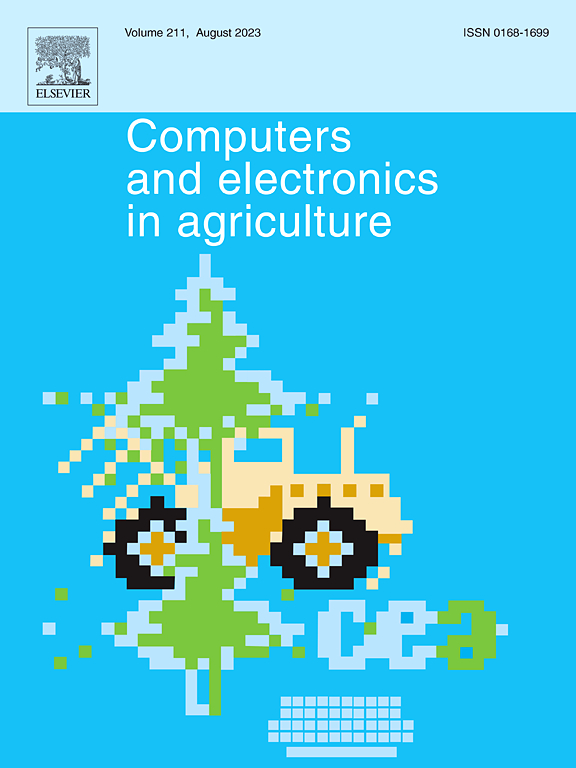Diffusion model-based image generative method for quality monitoring of direct grain harvesting
IF 7.7
1区 农林科学
Q1 AGRICULTURE, MULTIDISCIPLINARY
引用次数: 0
Abstract
In direct grain harvesting, precisely detecting grain breakage and impurity rates is crucial for optimizing harvesting efficiency and enhancing grain quality. Deep learning models are increasingly employed in quality monitoring for direct grain harvesting, facilitating accurate time detection of breakage and impurity rates during the harvesting process through image processing. However, deep learning models are often constrained by the grain dataset, which is limited by difficulties in collecting, poor diversity, and few image samples of breakage and impurities, which increases the likelihood of misrecognition and omissions. Therefore, we proposed an image generation method based on the Denoising Diffusion Probabilistic Model (DDPM), which incorporates a designed spatial and channel attention block (SCA-Block) into the U-Net architecture within the DDPM, resulting in the Dual Attention Diffusion Model (DADM). The results of the generated experiments showed that DADM outperformed DDPM and Generative Adversarial Networks (GANs) in terms of FID scores for the corn, rice, and soybean datasets with 45.12, 50.7, and 36.68 respectively. The results of the segmentation experiments showed that DADM enhancement can effectively improve the performance of segmentation models compared to traditional enhancement. To verify the scalability of DADM, we also conducted experiments on the pest and disease detection dataset, and the results showed that the DADM enhancement still worked significantly, with a 5.07% improvement in the MIoU. Our research provides new insights into the enhancement of agricultural image datasets and, through image generation, solves the problem of difficult agricultural image collection due to factors such as season, climate, and environment, and then improves the training effect of downstream tasks such as semantic segmentation and target detection, promoting the comprehensive application of deep learning in agriculture.
求助全文
约1分钟内获得全文
求助全文
来源期刊

Computers and Electronics in Agriculture
工程技术-计算机:跨学科应用
CiteScore
15.30
自引率
14.50%
发文量
800
审稿时长
62 days
期刊介绍:
Computers and Electronics in Agriculture provides international coverage of advancements in computer hardware, software, electronic instrumentation, and control systems applied to agricultural challenges. Encompassing agronomy, horticulture, forestry, aquaculture, and animal farming, the journal publishes original papers, reviews, and applications notes. It explores the use of computers and electronics in plant or animal agricultural production, covering topics like agricultural soils, water, pests, controlled environments, and waste. The scope extends to on-farm post-harvest operations and relevant technologies, including artificial intelligence, sensors, machine vision, robotics, networking, and simulation modeling. Its companion journal, Smart Agricultural Technology, continues the focus on smart applications in production agriculture.
 求助内容:
求助内容: 应助结果提醒方式:
应助结果提醒方式:


